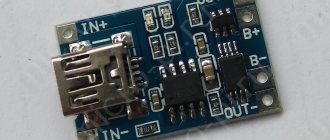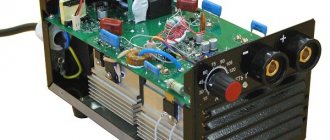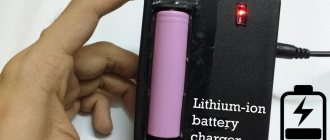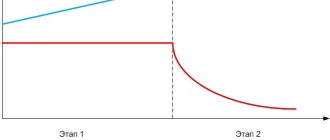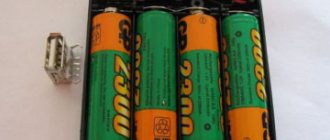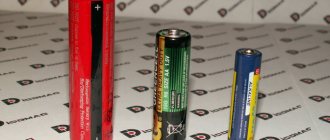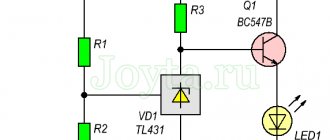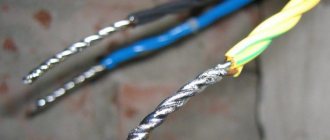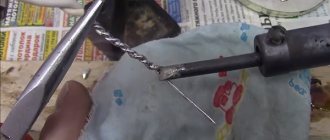Assembling a Li-Ion battery with your own hands is a feasible task, but to successfully solve it you need a responsible approach and experience in performing electrical installation work. When creating batteries, amateur designers often make mistakes that lead to deterioration of performance, reduced battery life and other negative consequences. Therefore, from a technical point of view, most homemade lithium batteries are inferior to factory-made counterparts.
When assembling a lithium battery from individual cells at home, difficulties arise already at the stage of selecting cells with the same characteristics. In the professional production of rechargeable batteries, cells are thoroughly tested, and elements with differences in parameters of no more than tenths of a percent are selected for combination in one housing.
Amateur designers traditionally assemble batteries from existing cells with noticeably different characteristics. When using such batteries, they become unbalanced and wear out prematurely, despite the use of a BMS board. Next, we will look at the popular mistakes of novice craftsmen and tell you how to make a lithium-ion battery with your own hands without sacrificing quality.
Testing batteries with the Litokala Lii 500 multifunctional charger:
First, let's test 18650 batteries for capacity, resistance and compare the characteristics as stated by the seller.
It will be checked using the multifunctional universal charger Litokala Lii – 500
, using the device you can conduct a quick or full test of batteries (26650, 18500, 21700 3.7, in Li-Ion and NiMH AA AAA) for the charge-discharge test you can choose what power to charge and discharge the batteries, it can be 250 mah or 500 mah .v
My charger has four slots for batteries, let's insert 18650 batteries into them and check their capacity with a quick test, a quick test does not mean that it will be fast, approximately at least 8 hours will be required to discharge and charge; moreover, I chose the charge-discharge position of 250 milliamps and At this current it will take as long as possible.
appearance of the Litokala Li500 charger
smart charger Litokala Li500
The thickness of the 18650 battery is 18 mm
The length of the 18650 battery is 65 mm
18650 batteries with the declared characteristics - full marking (ICR18650-26F, 3.7 V 2600 mAh) such batteries can be charged more than 1000 times, which means if you use the battery almost daily and charge it, it should last for 3+ years, the ICR battery uses cobalt + lithium, the marking 18650 stands for the size of the battery, that is, it has a diameter of 18 mm and a length of 650 mm, similarly with others, for example, 26650 has a diameter of 26 mm, length is 65 mm, the lower discharge limit is normal recommended 3.7 volts but can deliver up to 2.75 volts and this can lead to rapid wear due to an increase in internal resistance values and loss of capacity, and the declared capacity of 2600 mah after the test it will be clear what the actual capacity of these batteries is.
Some recommendations:
ATTENTION:
these batteries cannot be charged without a specialized charger or bms protection board, otherwise, when overcharged, such a battery will simply ignite, the burning time is about 3-5 minutes, with a very strong release of lithium and its ignition, you cannot extinguish it with water, this will only aggravate the situation. When used correctly, these types of batteries are safe. Do not pierce, throw into fire, or overheat.
WINTER STORAGE:
batteries assembled from lithium-ion cells should be stored in a dry room, cannot be stored near a heat source, the optimal storage temperature is from +8 to +25, it is advisable to leave the battery charge at 60-70% so that there is approximately 3.8 volts in the section, self-discharge This type of battery is very low and amounts to no more than 1% per month.
Fast test we measure the real capacity of 18650 elements:
After installing the batteries in the slots, you can immediately see what resistance the tested batteries have: 1=36 milliohms MR, 2=33mR, 3=33mR, 4=33mR normal values are considered from 10 to 100 milliohms; more than 100 can be considered unusable, and they may be suitable for low-power flashlight. These are not high-current elements with a load of up to 15 amperes, if you have a powerful motor of more than 1000 watts, then either assemble a battery with a large number of parallels (for example, 7 - 9) or buy high-current elements, for example, proven Litokala INR18650 25RM batteries, 20 A discharge the estimated cost is a quarter more than the tested ones - approximately 145 rubles per piece, and the cost of the tested elements ICR18650-26F is currently 109 rubles per piece.
I put the batteries on a quick test
It can be seen that the resistance of the tested batteries is quite excellent. I will enter the values into the table, so I will check all 70 batteries from which the electric bicycle battery will be assembled. They will be sorted by capacity to assemble sections with the most equal values, this is necessary so that the assembled battery produces the maximum possible characteristics.
After several hours of charging and discharging with low current, I received the following values for the elements: 1 = 2734 mah, 2 = 2754 mah, 3 = 2752 mah, 4 = 2788 mah, I enter these values into the table and gradually check all the elements in this way and enter them into the table, and sign the elements.
the test is completed, this is the capacity of each 18650 battery
After entering the data, I got the following table
According to the results obtained, we can say that these batteries not only meet the declared characteristics of 2600 mah, but also exceed them by an average value of 2740 mah, which is very, very nice.
Half a month later
How long or how short is the tale told, but it won’t be done soon. So, all 70 elements were checked, the values were entered into the table, it took a lot of time, about 15 days))) but now you can accurately sort all the elements into sections to get equal values, for this you need to go to the website (repackr.com) and Enter data on battery capacity.
I'm assembling a battery from 18650 12V cans
Hello everyone, I want to show you how to assemble a battery from 18650 12V cans. I am assembling such a battery for a winter underwater camera, and it can also be used for a screwdriver. Briefly what we need, but first I’ll say that I didn’t use special equipment, but, as they say, collected everything on my knees.
So, in order for you to assemble a simple and reliable battery, you will need:
- electrical tape (what would happen without it)
- ironing iron 100-150 W
- solder acid
- thin copper plate
- battery charge module board (this is required) Link here
- hands (preferably growing from a normal place
